-
Posts
132 -
Joined
-
Last visited
Everything posted by Dave G
-
This has been quite a revealing and educational discussion! I was just going to note that I've probably been doing a lot of overthinking about it. I think it is a wise idea to save MIDI and audio copies. Besides, that process won't happen for quite a while. Right now, my priority is remixing my old 90's tracks as indicated above -- and finishing several new tracks. Thanks, everyone, for the insight!
-
There is no issue of hard drive space at all. I'm just trying to determine the best way to archive my work once it's finished. The main point, having to have all those VST's installed if I should ever have to edit the archived MIDI track. I believe I further understand the function of bouncing my MIDI instrument tracks to audio, as I researched this and tried it a bit yesterday. That's correct; I don't have a lot of VST's I'm using instruments from. However, for the sake of simplicity, I may opt to leave Session Drummer and SI Drums out of the equation completely, because Addictive Drums is far superior, from what I can tell. Your suggestion to utilize the notepad is a very smart idea. I was pleased to see it recorded the actual creation date of my project. If only Windows would maintain the file creation date (vs. Modified date) in that manner. If you have a file you save over and over again, you know what I mean. Whether it be inside or outside the DAW, I may somehow keep notes of all the VST's and instruments I'm using in case those need to stay installed. Then again, for the audio only versions of my projects, those won't matter. Because I consider myself a perfectionist, there's always the likelihood of changing something that doesn't need changed. Working a large project with so many variables and functions, the fear of doing something incorrectly and having to fix it is not just daunting, but quite paralyzing. This is why I have to question how to archive my projects and whether I want to preserve the notation. Because I know that strictly saving as audio only means losing the ability to edit them on a note level. I am aware that preserving these projects as audio tracks still allows for some editing capability, such as effects and volume. But that matter has already been discussed. I'll let you in on some background. In the 90's, I composed several tracks in Voyetra Digital Orchestrator -- back then, one MIDI file, GM instrument set only, no external add-ons whatsoever. I knew nothing about mixing. After exporting the finished tracks to MP3, I foolishly discarded the MIDI files. Then, I gradually realized how unbalanced and poorly mixed those tracks are and wished I could correct them. When Sonar came around, I decided to remix all my old tracks for today's DAW, but I had to rewrite them all from scratch. I don't want that to happen again. This is why I have to decide archiving as MIDI vs. audio (and/or both). For the average composer, I'm sure it's not as concerning. But for myself, I have to second-guess every decision, especially if it's permanent. Just want to do it all right. Whether relevant or irrelevant, I do appreciate the conversation and the ongoing information. This is valuable to my education in this hobby. I'm aware of the flexibility of MIDI files; it's simply a question of how to preserve the finished work. Not to beat a dead horse, just fielding everyone's input. What I've learned here is: it comes down to saving the MIDI tracks (and all the VST's remain installed) or saving audio only (satisfied with my work and committing to the finished product). But furthermore, being awfully meticulous in mixing it properly before "setting it in stone". Whatever the solution and the reason, I just want to finish my projects to my best ability but also keep them open for editing. I know there's a lot of contradictory thought, confusion, and skepticism in my reasoning. It's hard to explain, but it's all part of the learning process. I will say, pertaining to my need for control, it's a huge thought process...even considering my music is strictly for personal enjoyment and no professional ventures whatsoever.
-
Just for clarification, by "MIDI track", you're referring to a "project" track, not as in "single MIDI instrument" track, correct? I kind of figured that there'd be no way to "lock in" my VST's and plugins to the project, rather than them be fetched outside the DAW from where they're stored. Thanks to all for your explanation. Although I have trouble putting my thoughts into words, I hope you understand my concern when it comes to keeping these projects "whole". I just wish the options were more finite, convenient, and clear cut. I completely agree that MIDI files are 100% future proof, but when including the instruments and drum kits from several libraries, things will get complicated. This is the part I find cumbersome, that I have to keep all VST's installed for each project -- every single add-on + Sonar -- or the project isn't complete. Like a special recipe that has to have all the ingredients included all the time, or it fails. So I'm guessing that my options are: Keep my MIDI versions accessible (but also keep all the included VST's installed) Bounce all the tracks to audio, thereby permanently losing notation editing ability, but editing clips instead (and not worry about VST's) As Treesha suggested, keep both MIDI + audio versions of each project (more files to keep track of) Am I understanding this right? Because with either option, I'll have a mess on my hands. I think the complication lies within how to save/store the projects in the simplest, cleanest way feasible. Kind of overwhelming. And this means, if I'm willing to lay down the notes and convert them to audio and leave it that way, I'll really have to commit to my decisions. In that respect, I'll have to evaluate how many VST's I'm using and minimize those resources... (TTS-1, Cakewalk Sound Center + 19 add-on packs, Studio Instruments Suite, Session Drummer and Addictive Drums) So I do have one remaining question: My project is all Simple Instrument Tracks. When I bounce the project to audio, do I have to bounce each track to its own audio track, or can I bounce the entire project/mix to one track before export? (I may have more questions on this later, as I'm confused.) I know I'm overthinking, but it just feels to me that's necessary for such a big decision when it's time. Thanks for your responses.
-
So, let's assume I've finished a MIDI project (no audio tracks, just MIDI notation) and exported to MP3. I'll also want to archive the project... I'd want to store the project in a way that's open to revisions as necessary, maintaining all the resources I've used (VST instruments, plugins, effects, etc.) These resources are not "embedded" in the project in any way. Therefore, keeping a raw version of my project would mean also keeping all associated VST's and plugins (and Sonar, for those VST's not included in CbB) fully intact. This concept seems to me a daunting task just to keep my projects "complete" for future use...and for all time. Otherwise, they'll be missing some of the aforementioned components. I've heard talk about bouncing/freezing tracks. Would this function help "preserve" my projects to ensure nothing goes missing? If so, what's the difference between the two functions? And in doing so, would I ever be able to convert the tracks back to MIDI notation form? And if bouncing/freezing is necessary, would I apply effects (reverb/delay, etc.) before or after? The problem is, converting my tracks to audio format makes me uneasy -- if this means permanently rendering the MIDI notes uneditable. Most likely, I'd want to keep those tracks in MIDI notation form so they would be always be open to editing. Anyway, when I do eventually finish my projects, I'll want to have them saved in a way that's final but still open for future edits. As said, my biggest concern is remembering to have all the included resources installed at all times. How does one archive and adequately preserve a Cakewalk project they've finished -- MIDI notation or not -- with these concerns in mind? Please advise. Thank you in advance! 😊
-

PRV multi-track editing: Show notes of only ONE track at a time
Dave G replied to Dave G's topic in Cakewalk by BandLab
Agree, and totally understood. -

PRV multi-track editing: Show notes of only ONE track at a time
Dave G replied to Dave G's topic in Cakewalk by BandLab
Thanks for the explanation. Wow, that looks like a really intense mix! 😊 Yes, I forgot to clarify I'm using Sonar Artist... for a while. And yeah, it has been frustrating because I just can't seem to keep the PRV focused on only one track at a time. Per your screenshot: all those extra functions I see in the Track Pane, I'm pretty sure that's the way I would much rather have it. Much more control. -

PRV multi-track editing: Show notes of only ONE track at a time
Dave G replied to Dave G's topic in Cakewalk by BandLab
I totally get it! I have seen the differences. I keep switching back and forth, honestly. 😊 I don't know what the hesitation is, I just want to know that CbB will always be available and there won't be any problems down the line. -

PRV multi-track editing: Show notes of only ONE track at a time
Dave G replied to Dave G's topic in Cakewalk by BandLab
Yeah -- I am sure it's well-documented. I've seen a few articles and YouTube tutorials, but I'm just somehow missing the part about being able to strictly edit one track at a time... At least until I get the hang of how this works, and get comfortable editing multiple tracks at once. (shrug) Thank you for the wealth of information. My [physical] workspace only allows for one monitor. I haven't figured out how/when I decide to expand yet. I am aware of the Track Pane, and I've used it before. It's just at some point, I became confused at the "focused/ghosted notes" behavior and can't make sense out of it. The screenshots here indicate my current [DAW] workspace set up, and each workspace appears as follows: Track window and PRV with browser on the right Full-screen PRV with Track Pane on the right* Full-screen Console, and nothing else ( * In this Workspace, Track 1 is in focused and Track 5 is ghosted. I think I understand that much.) I'm still trying to tweak these Workspaces to streamline my productivity as smoothly as possible. The only exception: Long ago, I eliminated the Synth Rack from view because I didn't consider it vital. [FYI: I am actively working in Sonar, because for some reason I still haven't committed to CbB. I'm aware the CbB is more current and versatile, as I just want to be sure that it is stable, reliable and accessible. ] -
Sometimes, when I change instrument tracks, the PRV shows notes from multiple/last touched/a different track. And I don't always use the Track Pane to correct this. This seems to happen randomly. Usually, I have to change workspaces and go back to that PRV screen to get it to show only one track for editing. There are some times I wouldn't mind multi-track note editing, but other times, it's too confusing for me to mess with. In the attached screenshot, the bass guitar track is the only one in focus, but the OB Sweeper notes are shown in the background. (That OB Sweeper track has no focus right now.) How do I view the notes from only one track at a time, and keep it that way? Can I integrate that into a workspace or something? Thank you in advance.
-
Awesome! Thanks for the explanation. Thank you! I thought AD2 had a digital manual, just never thought to look or where to find it. Checking the manual, I found clear diagrams of all the snare hits in the very back. (Wish I'd seen that before!) 👍
-
Thank you for the explanation! I didn't realize these techniques are very YouTubeable, so I've learned a lot there. Having just watched several of these videos, I notice that these drummers are saying the RimClick and SideStick are the exact same technique... But, as you said, RimClick is simply just striking the rim like one would play the drum (not as common as SideStick?) I think the way you explained it makes more sense to me. What about the Snare Open & Shallow hits? Aren't those the same strike, but with different force? 👍 I've confirmed that these assigned sounds change with each drum kit, and therefore not permanently assignable to a Flexi (i.e. assigning a hand clap, tambourine, and a cowbell, saving the custom map, and changing to a different kit...but those Flexis didn't "stay".)
-
I've created an Addictive Drums 2 "minimalist" drum map. I found the default AD2 drum map too elaborate and too jumbled to manage, so I've reduced the entire map down to the sounds I'm most likely to use. Image is attached here. As pictured, I've neatly grouped each category of drum piece together as closely to the traditional GM map as possible. (I wasn't satisfied with the AD2 custom GM map either.) I'll eventually create a Cakewalk drum map that matches this so it's reflected in the PRV. But, to further educate myself and tweak the drum map accordingly, I request clarification of the behavior of some drum sounds: What's the difference between Bell, Tip, and Shaft hits (esp. Ride and HiHat)? What's the difference between Snare Open / Shallow hits? (These sound alike.) What's the difference between a Snare RimClick and SideStick? Am I clear in understanding that the designated Flexi hits don't stay saved in the map, as they're variable with each AD2 kit? Part of my confusion is that many of the corresponding hits sound alike. If any drum enthusiasts out there can enlighten me, much appreciated. After all, this will be a universal drum map for me and I don't want to change it later after I've used it in several projects. Thank you!
-
I've never heard of Orchestools. I'll have to give that a look. I never thought CSC instruments sounded dated or bad at all. But then again, I purchased a bundle of Digital Sound Factory instrument expansion packs to populate my library. As far as Studio Instruments Drums and Session Drummer 3, I like those about the same. I don't hear anything substandard of those VST's. Possibly though, because I'm not a seasoned audiophile, or I'm simply used to working with the resources I have. Besides, I'm learning that a little bit of tweaking of the knobs/dials of the drum kit pieces can make a big difference. I just want to make music and have fun. 😄
-
Which do you consider is the better VST: Studio Instruments Suite or Cakewalk Sound Center? In choosing an electric piano, bass guitar, or stringed instrument, it's hard for me to decide which library to pick from. I like them both, and I don't necessarily have a "go-to" VST yet for these particular instruments. (However, I ultimately opt for CSC by the end of the mix process.) Side note: They both have infinite possibilities for Strings! I'm not particularly well-versed in assembling string sections, so I usually opt for a generic string ensemble instrument. I'm just kind of curious about others' thoughts as I try to commit to certain instruments. What is your opinion between the two? Thanks in advance.
-
Hmmmm...I suddenly wonder if we're talking about two different functions. RPN or NRPN? I've learned the use of RPN and confirmed its functionality in TTS-1. However, I also learned that it doesn't work for Cakewalk Sound Center and Rapture Pro. If we're crossing our signals, I apologize for dragging you through this. LOL. I'm inquiring whether NRPN events would satisfy the large bend function in the way that RPN doesn't? If this is indeed the case, I'm perfectly happy delegating my large pitch bend needs strictly to TTS-1 and leaving it at that. TTS-1 and Cakewalk Sound Center are the only VST libraries I have (which I'm completely content with).
- 22 replies
-
- rpn
- pitch bend
-
(and 1 more)
Tagged with:
-
Per the attached screenshot, I drew three notes with a maxxed pitch wheel event on each (0 to 8,192), resetting it to 0 after each note is played. I inserted three preceding NRPN's which only resulted in a two-note bend, as expected. Then I realized that I neglected the Value drop-down menu... I don't see a Bend Up/Down selection therein. Which entry from the Value menu am I supposed to select for this technique? EDIT: I also just realized that the Value menu is dependent on the Track type. This menu appears for a Simple Instrument Track (the one below, TTS-1) and a MIDI Track, yet appears as a numerical input menu for a Waveform Track.
- 22 replies
-
- rpn
- pitch bend
-
(and 1 more)
Tagged with:
-
Thank you for the clarification on this. I believe this might be my last shot at making this work. Apart from that, back to existing methods. LOL.
- 22 replies
-
- rpn
- pitch bend
-
(and 1 more)
Tagged with:
-
Thank you for the explanation. I've researched the potential usage of NRPN for pitch bend range, but couldn't locate anything useful. Would you please elaborate on the equation you provided above, maybe give an example? I still kinda fail to understand this compared to a typical 2-note bend or an RPN bend...
- 22 replies
-
- rpn
- pitch bend
-
(and 1 more)
Tagged with:
-
In another topic, I learned that RPN + pitch bend function doesn't work in Cakewalk Sound Center either. This was after I tried entering a Wheel (i.e. full octave pitch bend) automation lane, then an RPN automation lane in the Track window. The Wheel lane worked fine, however, the RPN automation wouldn't work for me either. Just wouldn't do what I thought it was supposed to do (at the time). I may try using NRPN events in the Controller pane to see if that works out. But it's been an extensive amount of research and discussion for this simple little function, that may be all for me. Noted, of course, I don't use an external controller/keyboard. I mouse draw everything into the PRV; just the way I've grown accustomed to this hobby. Taking everyone's input into consideration, if large pitch bends otherwise absolutely cannot be done in the DAW using this method, I'll probably just say quits on that experiment. And just go back to using a TTS-1 instrument track for large pitch bends, as this is where I've confirmed RPN's to work as, when, and often as needed in the track progression. I realize that a large pitch bend of, say, six notes, an octave or more isn't realistic unless I want to create some sort of flair or outrageous fancy upward/downward effect for an instrument. But I feel that a pitch bend of a default of two semitones might restrict some creativity at some point. (shrug)
- 22 replies
-
- rpn
- pitch bend
-
(and 1 more)
Tagged with:
-
Okay. So that being said, how would one use NRPN in the PRV Controller Pane the way I would normally use RPN to set the pitch bend range in the fly (rather than just once from the GUI?) I was looking around for this information, and I couldn't find any documentation of NRPN being applied to control bend range events in the PRV. Still, however, I guess Rapture Pro is a moot point because I'm using the demo and Pro is no longer available for sale. 😕
- 22 replies
-
- rpn
- pitch bend
-
(and 1 more)
Tagged with:
-
The only function I know of to do this is to draw the RPN's into the Controller Pane, but Rapture Pro's Bend value overrides that completely. And if it did work, you could insert several RPN's into your track at every different pitch bend, but it would ignore them. I've never used NRPN events. How does that relate to RPN? I don't understand it either. (Unless I'm misunderstanding your explanation...?) I can't draw a 3,072 RPN in the beginning of the track as a catch-all to each pitch bend above 2 notes. Every pitch bend has to be preceded by a custom RPN that sets its range. In the PRV screenshot of my original post, I've drawn two pairs of notes: the first of each pair bent upward to match the key of its partner note (the 2nd and 4th notes). The Wheel line is drawn all the way up to 8,192. I also inserted two RPN events (not pictured) in the Controller pane. The first one, inserted before note 1, tells it to bend up one octave (1,536). The second one, inserted before note 2, tells it to bend up two octaves (3,072). But those two RPN instructions will be ignored because I already told the Rapture to default bend by 24 anyway. So it will do that with every pitch bend in the track. Therefore, this setting cancels out varied bend ranges unless they are the typical default pitch bends (2 semitones). Should I want large bends in my projects, this could be an unfortunate impediment and restriction to my creativity. However, TTS-1 allows this technique. Fortunately, TTS-1 allows the option of either setting a range in the synth window or drawing RPN's into the Controller Pane. And as you play the track, the Bend Range display value changes accordingly with every RPN event that is passed.
- 22 replies
-
- rpn
- pitch bend
-
(and 1 more)
Tagged with:
-
Thanks for the clarification on this. That is disappointing... I would hope that Rapture would fulfill that need for the extra flexibility. Looks like back to TTS-1 for using RPN controllers when the need arises.
- 22 replies
-
- rpn
- pitch bend
-
(and 1 more)
Tagged with:
-
Trying out the demo of Rapture Pro, I'm learning about large pitch bends. I thought this would be easier, but I'm ashamed I have to ask for help on this. Rapture handles typical pitch bends (instrument bend range defaulted to 2), normally. However, I'm having difficulty managing larger pitch bends... First, in the Controller pane, I draw a Wheel line from 0 - 8,192. Then, once I set the UP knob higher than 2, that overrides every RPN level I'd set in the controller pane. Perfect for one static bend range throughout the track, but certainly not open to flexibility for multiple ranges programmed in the track. So I can't set varied ranges, because that UP knob set to 24; every pitch bend on the track will go the full two octaves. This setting doesn't leave the track open to a variety of pitch bends, just one set to 24 notes. May I please get some insight on this function? Is there another step I'm missing to set variable RPN's/bends in a Rapture instrument track? Screenshots included: a) Two test pitch bent notes, drawn to 8,192, each rising to the key of the next note, b) the Perform section of the instrument Element window, defaulted to 2. First note bend rises by one octave; the third note bend rises two octaves. Thank you in advance.
- 22 replies
-
- rpn
- pitch bend
-
(and 1 more)
Tagged with:
-

Cakewalk Sound Center doesn't respond to RPN + Wheel
Dave G replied to Dave G's topic in Cakewalk by BandLab
Good to know. After evaluating the Rapture Pro demo, I'm quite pleased. Also, I was able to create a two-octave pitch bend with a Pro instrument. I simply changed the bend range in the bottom of the Pro Elements window(s) and it worked. Better than dumping a bunch of RPN CC's all over the Controller pane. I do notice that Rapture crashed a few times via fatal error c0000005, and I'm already running as Administrator. I'll have to look for that to happen again. Besides that, I've been enjoying Cakewalk Sound Center all this time, but I sure wish I'd purchased Rapture Pro long ago. -

Cakewalk Sound Center doesn't respond to RPN + Wheel
Dave G replied to Dave G's topic in Cakewalk by BandLab
Thanks for the suggestion! That being said... What if you install Rapture Sessions/Pro without Sound Center already installed? Will it work independently, and could I still install my Digital Sound Factory expansion packs/add-ons into the Rapture folder?



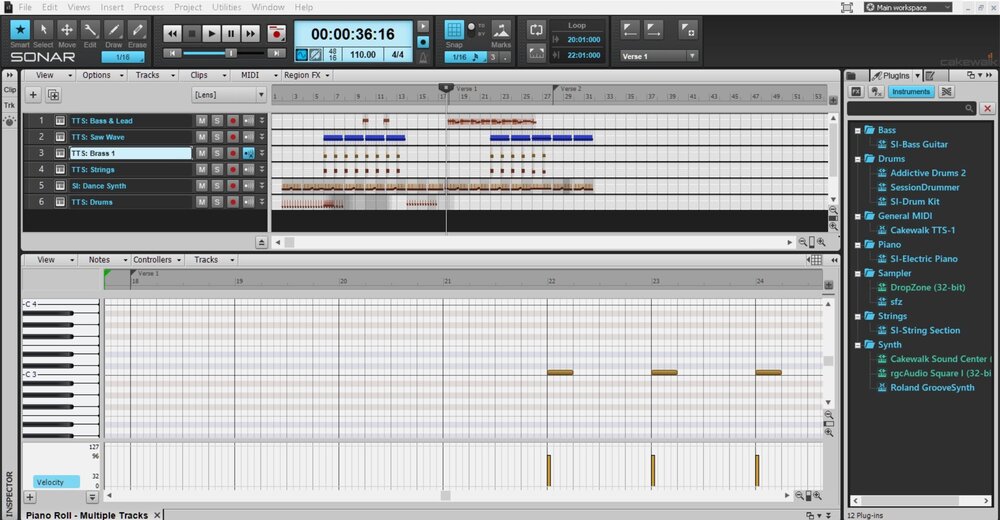
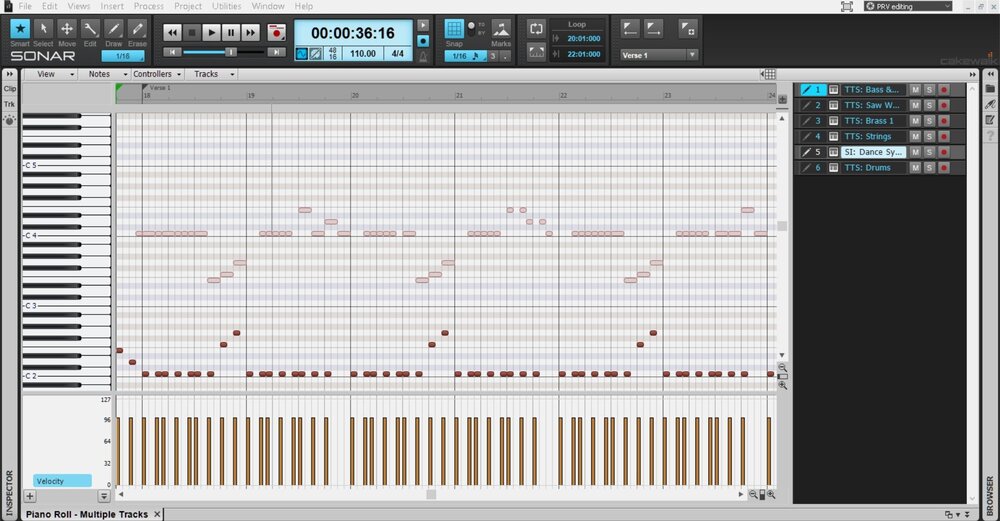
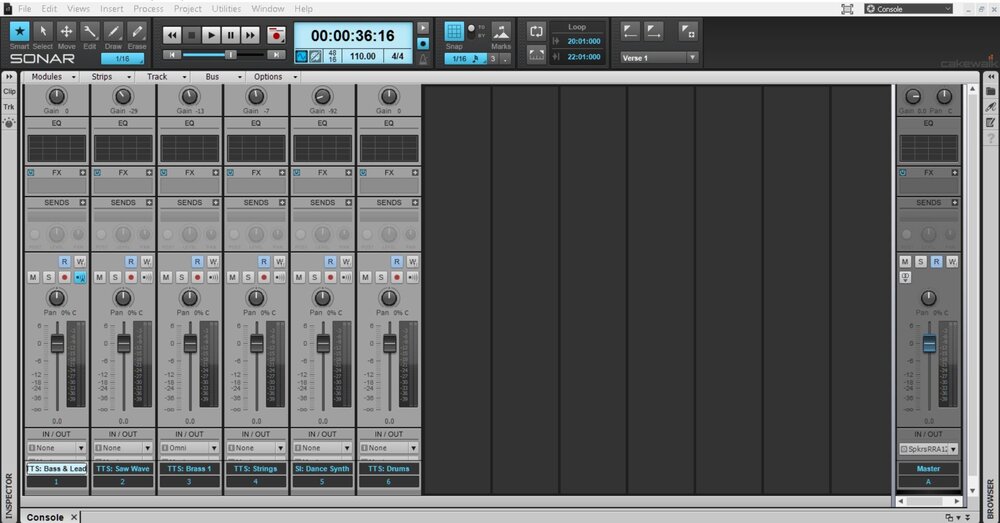
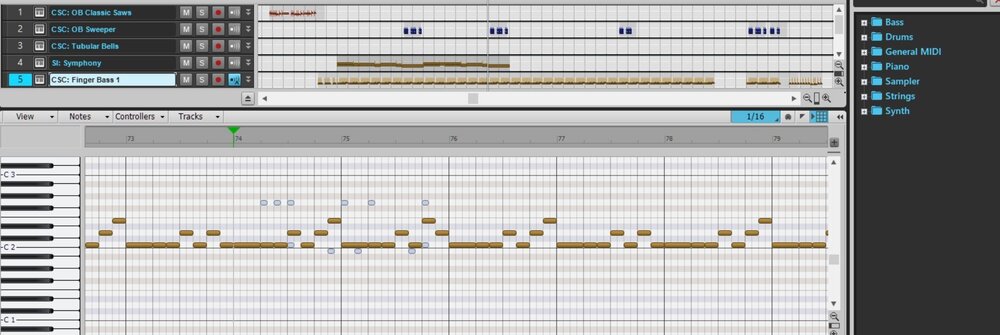


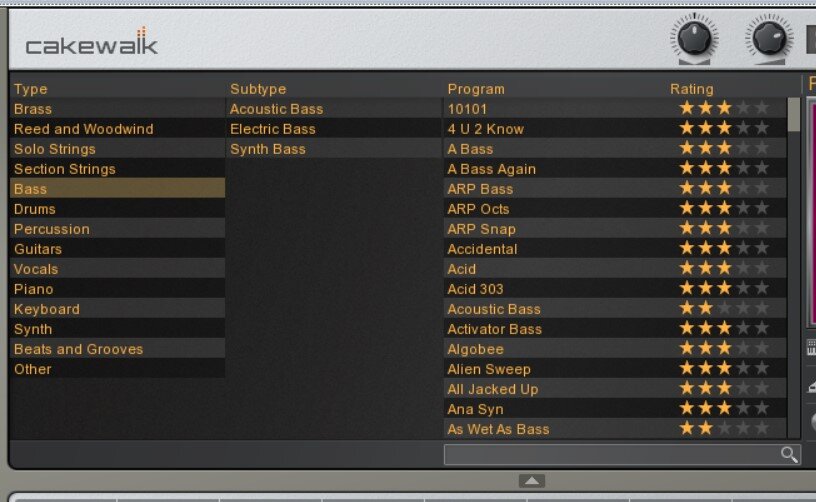

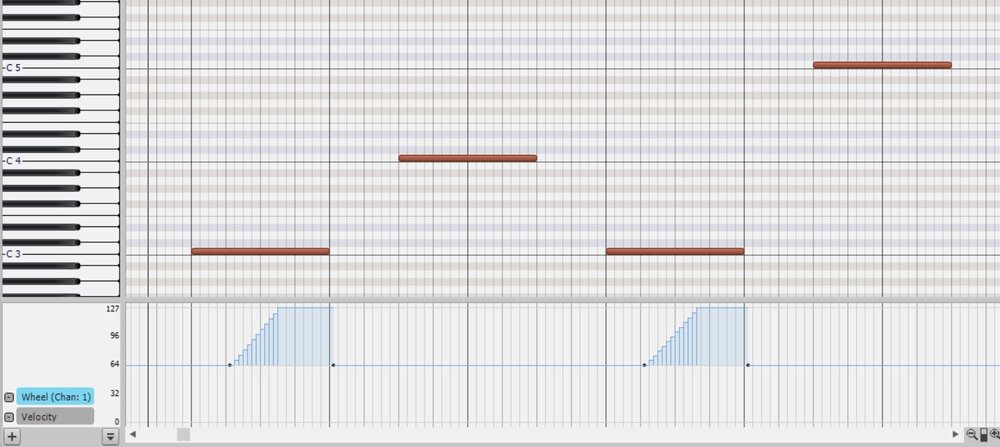
.jpg.34c62c53ba203fefd83d46520119a22c.jpg)